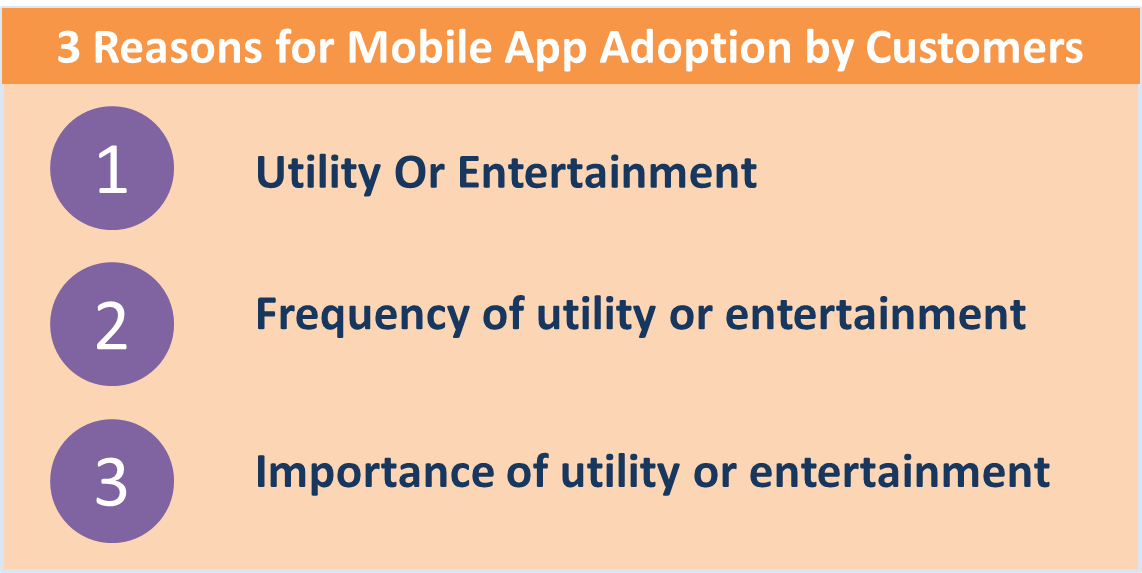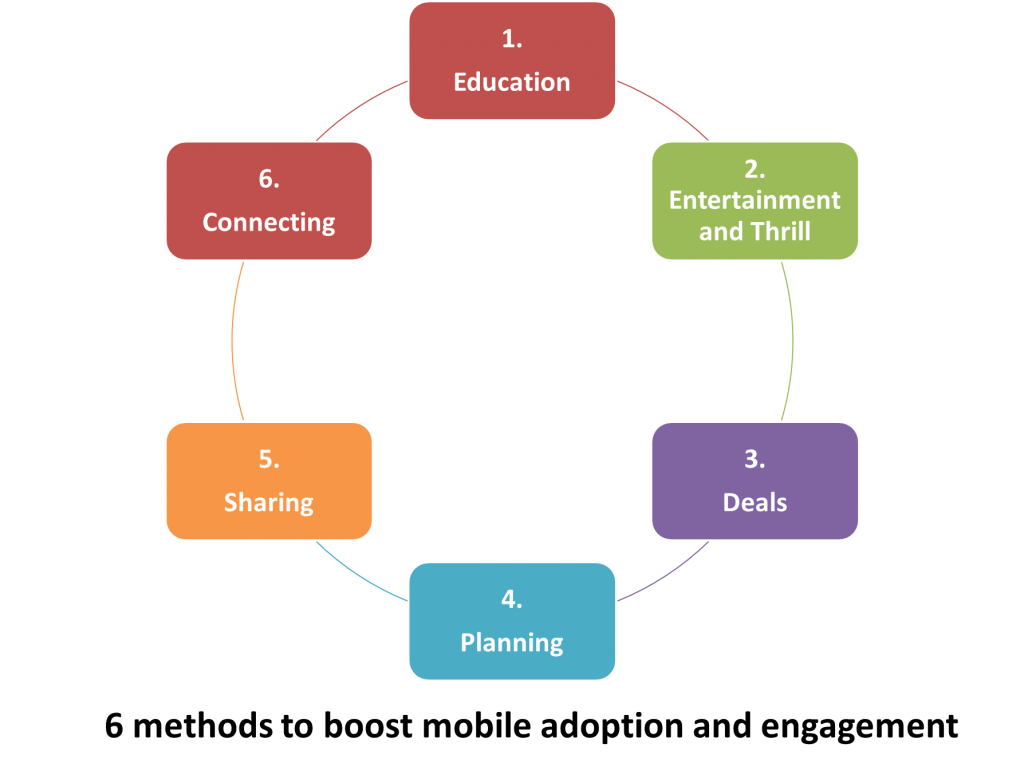The world is mobile today, and having a mobile strategy is critical. However, a vast majority of mobile apps see dismal adoption rates. Lets understand why:
First, it is critical to understand that every app must provide tangible value to the user. And value comes from primarily two sources – utility, or entertainment. Consider a banking app, the CVS app, Amazon, Facebook, LinkedIn or Twitter. These provide utility value through various means. And then consider the many games, YouTube, music apps, etc. These provide entertainment.
Second, its important to define the frequency of utility or entertainment. Insurance apps or retail apps may provide excellent utility, but they are not frequent enough for the user to take the pain of downloading the apps. On the other hand the Amazon app provides frequent utility for the segment of customers who are Amazon Prime members. Similarly the many podcast or music apps, media publications need to cross a threshold of usage before they are downloaded.
Finally, the perceived importance of the utility or entertainment is key. Target or WalMart may have excellent mobile apps, but unless they link their apps to tangible value such as deals and promotions, it won’t matter. Brands will matter only when they 1) provide value, 2) are perceived by users as important, and 3) have frequent usage.
In most cases, adoption of mobile business apps boosts engagement, loyalty and sales, So what could you do to enhance the value of your app in the users eyes.
- Education: Your products serve a practical and useful purpose. So why not use that very purpose to help customers make their choices. Education around specific product usage, product fitment, and in general around the lifestyle related to the product can be used. For example, if you sell clothes then tell users about fashion trends and the purpose for which the clothes are to be used. Mothercare provides education content for mothers and content that is centered around the baby. Note that its not necessary to only educate about your product. If you’re selling fitness products, it’s great to tell customers about how to make the best of a camping trip, or adventure without talking about your product. The links will be obvious, and so will customer appreciation.
- Entertainment and Thrill: Any business scenario can be converted into a game, that then links to education or utility. If sales can be kept out of the game concept, that’s even better. For example, interactive marketing tools are great for this. If you’re Home Depot, get users to rate their DIY skills on a scale of 1 to 10, and then help them get to higher levels, with help from others. If you’re CVS, or Walgreens, then get users to compete with themselves and others on fitness. Even simple apps that track daily activity at a Gym will be excellent.
- Deals: Target launched deals and coupons through their mobile app Cartwheel. Even after considering that they have a consistent customer base who shops pretty regularly, launching an app any other way would have probably failed. As it has for many others. You can even link the deals to the location of the user, or to what’s happening on their network, city or community.
- Planning: If customers are lacking one thing today, that’s peace and quiet. Amidst all the real time promotions and shouting that’s going on, give users a breather and help them plan for the future through wishlists and save for later items. Then use the education feature to nurture customers, and help them with pricing and deal trends. For banks and insurers, this is a great way to improve cross sell as well.
- Sharing: If there is something that users would love to share, then do it. More than deals and products, try to make it emotional. Some examples are: share the holiday spirit, tell everyone that you cared enough about children to donate (at the POS), share this interesting article about fitness (or camping, or DIY repair) etc.
- Connecting: Too often we think of utility in terms of our own products and services. However our utility may be enhanced if we think of complementary products that the user needs. For example, a grocery app can bring in fitness data and provide suggestions accordingly for the best options. A department store can build up basic data around the users activities and purpose such as gift shopping, holiday shopping, routine shopping etc. Connecting user needs generates stickiness and hence influence adoption and revenue. But its difficult to ask the user to fill out everything, so this should be an incremental well thought journey.
Now that we have a sense of the core drivers, what are some important enablers to actually get customers to be aware of, and be happy about using the app?
- Telling & promoting: Users often need to be told that they should download the app. That action alone has ten times the effect of an email. Or send them an offer they can’t reduce. Utilize all customer touch points to tell users including at the checkout counter, when meeting an associate in the store, at the service desk, on the phone and wherever its right for your business. And ensure that the promotions you offer are also applicable to those who have signed up already.
- A great UX: Intuitive navigation, uncluttered design, and other pleasing and modern design aspects are a must have to get your concept soaring. Invest the right amount of time to plan this out. Don’t just leave it to developers or part time UX designers. The added advantage of a nicely laid out and complete UX design is that development is accelerated as developers don’t have to constantly guess about “what” to do. They can focus on code design, performance, security and other important aspects.
- User reviews: As fast as you can, try to get a few honest user reviews through explicit promotions if necessary. Nothing succeeds like those to accelerate the adoption. Even better, ask people to rate a set of particular aspects so you can get the right messaging in the reviews. For example, if you think users love the “sharing” feature and it is most appropriate in the context of your app from a competitive perspective, then focus on that. Ideally the topic you decide to focus on for reviews will provide immediately gratification value to your users.
These 3 final factors generally follow a great concept, not make it. The 6 methods here were covered briefly but its obvious that there are untold permutations and combinations, and what works for one may not for another. The important thing is to keep the principles in mind.
- Based on the 5 principles in my book Dancing The Digital Tune. The 5 principles help you build long term customer engagement, and compete better in this digital world.
- Buy it here and get 40% off!


